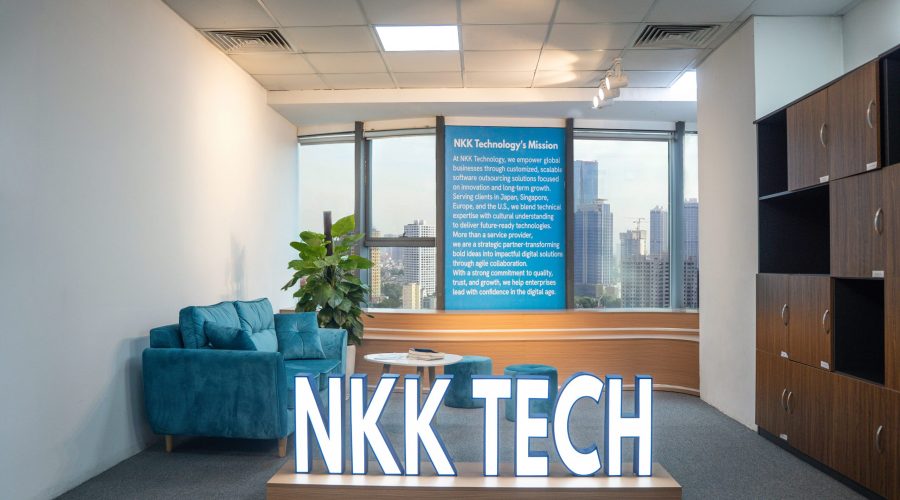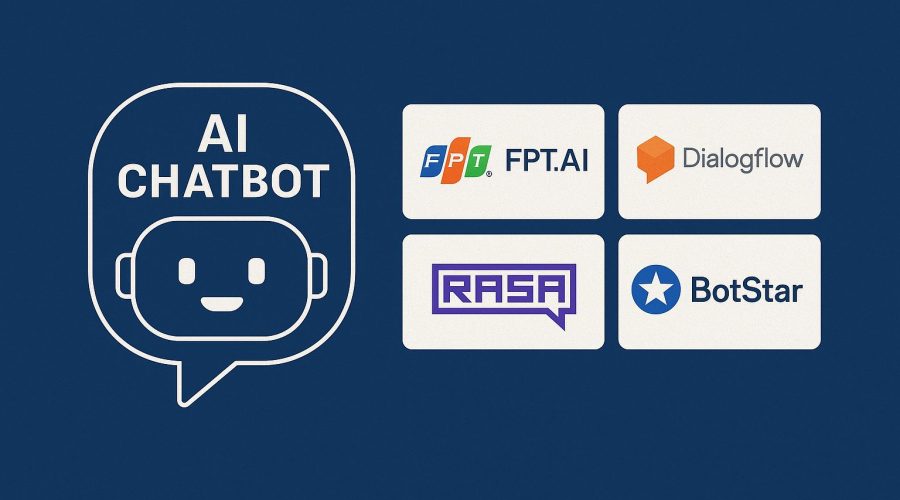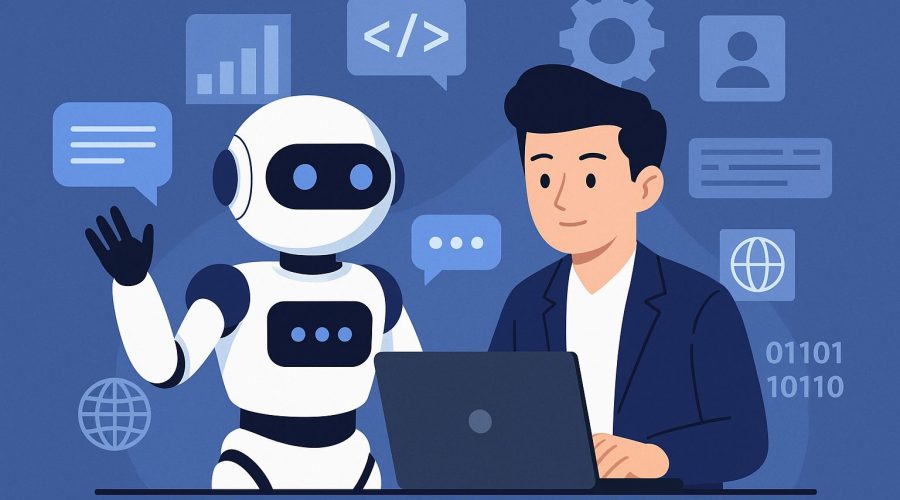Exploring the World of Modern AI Chatbots
Have you ever wondered how businesses provide instant support 24/7? Or how some websites seem to know exactly what you need? The answer often lies in **Chatbot Technology**. This innovative field is rapidly transforming how we interact with businesses and access information, making digital experiences smoother and more efficient. Understanding **Chatbot Technology** is crucial in today’s digital landscape, whether you’re a business owner or simply curious about the latest innovations.
Table of Contents
- What Exactly Is Chatbot Technology?
- How Does Chatbot Technology Work?
- Key Benefits of Implementing Chatbot Technology
- Different Types of Chatbots and Their Applications
- Challenges and The Future of Chatbot Technology
- Getting Started with Chatbot Technology
What Exactly Is Chatbot Technology?
At its core, **Chatbot Technology** refers to software applications designed to simulate human conversation through text or voice interactions. These programs allow users to communicate with digital assistants as if they were talking to a real person. Think of them as virtual representatives capable of understanding questions, providing answers, and even performing tasks.
Initially, chatbots were quite basic, following rigid rules and predefined scripts. For instance, they could only answer very specific questions. However, with advancements in artificial intelligence (AI), modern **AI chatbots** are far more sophisticated. They can understand complex queries, learn from interactions, and even maintain a coherent conversation flow. This evolution has made them incredibly valuable tools for various industries.
A key component of sophisticated **Chatbot Technology** is its ability to interpret human language. This process, known as natural language processing (NLP), allows the chatbot to break down user input and grasp the underlying intent. Consequently, businesses can automate routine interactions, freeing up human agents for more complex issues. Therefore, chatbots enhance efficiency and improve the overall customer experience.
How Does Chatbot Technology Work?
The magic behind **Chatbot Technology** lies in a combination of powerful computational techniques. Primarily, these include Natural Language Processing (NLP), Machine Learning (ML), and sometimes Artificial Intelligence (AI). When you type a question or speak to a chatbot, a series of complex steps unfold behind the scenes to deliver a relevant response. This intricate process ensures smooth and effective communication.
Natural Language Processing (NLP) and Understanding (NLU)
NLP is the backbone of any advanced **Chatbot Technology**. It allows computers to understand, interpret, and generate human language. Within NLP, Natural Language Understanding (NLU) is particularly crucial. NLU helps the chatbot comprehend the meaning and intent behind a user’s words, even if they are phrased imperfectly. For example, if a user asks, “Where’s my package?” or “Can you track my order?”, NLU helps the chatbot recognize that both questions relate to order tracking. Furthermore, it identifies key entities like order numbers or delivery addresses. This ability to interpret varied inputs is fundamental to a chatbot’s effectiveness. Therefore, NLP is an essential element in developing robust **conversational AI** solutions.
Machine Learning (ML) and Artificial Intelligence (AI)
Modern **AI chatbots** leverage Machine Learning algorithms to improve over time. ML models are trained on vast datasets of conversations. This training allows them to identify patterns and predict appropriate responses. The more interactions a chatbot has, the better it becomes at understanding nuances and providing accurate answers. Some advanced chatbots even use deep learning, a subset of ML, to achieve more human-like conversation capabilities. This continuous learning process ensures that the **Chatbot Technology** remains relevant and effective. Consequently, the user experience becomes more seamless and personalized with each interaction.
Dialogue Management and Response Generation
After understanding the user’s intent, the chatbot enters the dialogue management phase. This involves tracking the conversation’s context, remembering previous turns, and determining the next logical step. Finally, the response generation component formulates the chatbot’s reply. This might involve retrieving information from a database, performing an action (like checking an order status), or asking a clarifying question. The goal is to provide a helpful and natural-sounding answer. Thus, the entire process, from understanding to responding, demonstrates the sophistication of current **Chatbot Technology**.
Key Benefits of Implementing Chatbot Technology
The adoption of **Chatbot Technology** offers a multitude of advantages for businesses across various sectors. These benefits often translate into improved operational efficiency, enhanced customer satisfaction, and significant cost savings. Companies are increasingly realizing the transformative power of these digital assistants. Ultimately, integrating chatbots can lead to a more competitive and responsive business model. Let’s explore some of the most impactful benefits.
- ✅ 24/7 Availability and Instant Support: Unlike human agents, chatbots don’t need breaks, sleep, or holidays. They can provide immediate assistance around the clock, ensuring that customers always have access to support. This constant availability significantly boosts customer satisfaction, as queries are resolved instantly. Therefore, businesses can maintain a high level of service at all times.
- 🔹 Improved Customer Service Experience: Chatbots can handle a large volume of queries simultaneously, eliminating wait times. They provide consistent, accurate information, reducing the chances of human error. This efficiency translates into a smoother, more pleasant experience for the customer. Many businesses report higher customer satisfaction scores after implementing robust **Chatbot Technology**.
- 1. Cost Reduction: Automating routine tasks with chatbots significantly reduces the need for large customer service teams. This leads to lower operational costs related to salaries, training, and infrastructure. Over time, the investment in **Chatbot Technology** proves to be highly cost-effective, offering substantial returns.
- – Scalability: As your business grows, so does the volume of customer inquiries. Chatbots can easily scale to meet increased demand without requiring proportional increases in staffing. This scalability is a huge advantage for businesses experiencing rapid growth or seasonal spikes.
- 🔹 Data Collection and Insights: Every interaction a chatbot has generates valuable data. This data can be analyzed to understand common customer pain points, popular queries, and service gaps. Such insights are invaluable for refining products, improving services, and optimizing business strategies. Understanding user behavior is a powerful outcome of advanced **Chatbot Technology**.
- ✅ Lead Generation and Qualification: Chatbots can engage with website visitors, answer preliminary questions, and even qualify leads by gathering essential information. This streamlines the sales funnel, allowing sales teams to focus on truly promising prospects. Consequently, chatbots become a valuable asset in the sales process.
These advantages collectively highlight why **Chatbot Technology** is no longer just a futuristic concept but a vital tool for modern businesses. They represent a significant leap forward in **customer service automation** and digital engagement.
Different Types of Chatbots and Their Applications
**Chatbot Technology** comes in various forms, each suited for different purposes and levels of complexity. Understanding these types helps businesses choose the right solution for their specific needs. From simple rule-based systems to highly intelligent **virtual assistants**, the spectrum is wide. Let’s explore the common categories and their practical applications in today’s world.
Rule-Based Chatbots
These are the simplest forms of **Chatbot Technology**. They operate on predefined rules and scripts, following a decision tree. Users are typically given limited options to choose from, and the chatbot responds based on these selections. They are excellent for answering frequently asked questions (FAQs) or guiding users through structured processes. For example, a rule-based chatbot might help you navigate a company’s return policy by asking a series of yes/no questions. While less flexible, they are easy to build and deploy, making them a good starting point for basic automation. However, their limitations become apparent when users deviate from the expected script. They lack the sophistication of **AI chatbots**.
AI-Powered Chatbots (Conversational AI)
Also known as **conversational AI** or intelligent chatbots, these bots are powered by machine learning and natural language processing. They can understand complex, free-form language, learn from past interactions, and handle more nuanced conversations. This type of **Chatbot Technology** can interpret intent, sentiment, and even contextual information. Use cases include:
- 🔹 Customer Service: Handling a wide range of inquiries, from technical support to billing questions.
- 🔹 Sales and Marketing: Engaging prospects, qualifying leads, and personalizing product recommendations.
- 🔹 Healthcare: Answering patient questions, scheduling appointments, and providing information on symptoms.
These chatbots often integrate with CRM systems or knowledge bases to provide comprehensive support. Their ability to adapt and learn makes them incredibly powerful tools for enhancing user experience.
Voice Bots and Virtual Assistants
These are a specialized subset of **Chatbot Technology** that interact using voice rather than text. Popular examples include Siri, Alexa, and Google Assistant. They leverage advanced speech recognition and natural language generation (NLG) to conduct spoken conversations. Businesses can use voice bots for interactive voice response (IVR) systems, allowing customers to navigate menus or get information by speaking naturally. **Virtual assistants** are typically more general-purpose, capable of performing a wider array of tasks, from setting alarms to providing weather updates. The rise of smart speakers has significantly driven the demand for and development of this form of **Chatbot Technology**. Businesses are increasingly exploring voice interfaces to provide hands-free convenience.
Each type of chatbot has its unique strengths and optimal applications. The choice depends on the desired level of interaction, complexity of queries, and overall business objectives. Ultimately, the goal is to leverage **Chatbot Technology** to streamline operations and deliver superior service.
Challenges and The Future of Chatbot Technology
While **Chatbot Technology** offers immense potential, its implementation is not without challenges. Addressing these hurdles is crucial for the continued evolution and effective deployment of these powerful tools. Moreover, looking ahead, the future of chatbots promises even more sophisticated and integrated capabilities. The industry is constantly innovating to overcome current limitations and unlock new possibilities. Let’s examine some of the key challenges and exciting future trends.
Current Challenges in Chatbot Implementation
- – Understanding Complex Language: Despite advances in NLP, chatbots can still struggle with sarcasm, idiomatic expressions, or highly nuanced language. This can lead to misunderstandings and frustrating user experiences.
- – Handling Unforeseen Queries: If a chatbot encounters a question it hasn’t been trained on, it might provide an irrelevant answer or loop back to the beginning. Designing robust fallbacks is essential.
- – Integration with Existing Systems: Seamlessly integrating a chatbot with CRM, ERP, and other legacy systems can be complex and time-consuming.
- – Maintaining a Human Touch: While efficient, chatbots can sometimes lack the empathy and intuition that human agents provide, especially for sensitive or emotional issues.
- – Data Privacy and Security: Chatbots often handle sensitive customer information, raising concerns about data privacy and the need for robust security measures.
The Future of Chatbot Technology
The trajectory of **Chatbot Technology** is towards greater intelligence, empathy, and integration. We can expect several significant advancements:
- ✅ More Human-like Conversations: With progress in generative AI and large language models (LLMs), chatbots will become even better at mimicking human conversation, offering more natural and engaging interactions. This will make **conversational AI** indistinguishable from human agents in many scenarios.
- 🔹 Proactive Engagement: Chatbots will move beyond simply responding to queries. They will proactively offer assistance, anticipate user needs, and personalize interactions based on predictive analytics. For instance, a chatbot might pop up to offer help if you linger on a product page.
- 1. Multimodal Interactions: Future chatbots will seamlessly integrate text, voice, and even visual inputs. Imagine a chatbot that can analyze an image you upload to diagnose a product issue or provide visual instructions.
- – Enhanced Emotional Intelligence: AI will be able to detect and respond to user emotions, allowing for more empathetic and appropriate responses, particularly in customer service roles. This will close the gap in the ‘human touch’ aspect.
- 🔹 Deeper Personalization: Leveraging vast amounts of user data (with consent), chatbots will offer highly personalized recommendations and services, creating truly unique user experiences.
The continuous evolution of **Chatbot Technology** promises to reshape how businesses interact with their customers, making digital experiences even more intuitive and powerful. For more insights into emerging tech trends, you might want to visit the Nokasoft Blog.
Getting Started with Chatbot Technology
For businesses considering implementing **Chatbot Technology**, the process can seem daunting, but it doesn’t have to be. Starting small and scaling up is often the most effective approach. The first step involves understanding your specific business needs and identifying areas where a chatbot can provide the most value. Do you want to automate FAQs, streamline customer support, or generate leads? Clearly defining your objectives will guide your selection and implementation process. Therefore, a clear strategy is paramount before diving in.
Here are some key considerations when exploring **Chatbot Technology** solutions:
- Define Clear Goals: What specific problems will the chatbot solve? What metrics will define its success (e.g., reduced call volume, increased sales)?
- Identify Key Use Cases: Start with simple, repetitive tasks that consume a lot of human agent time. FAQs, order status checks, and basic troubleshooting are excellent starting points.
- Choose the Right Platform: There are many chatbot development platforms available, ranging from no-code solutions to those requiring advanced coding. Select one that aligns with your technical capabilities and budget. Some platforms offer pre-built templates to accelerate deployment.
- Train Your Chatbot Continuously: A chatbot is only as good as its training data. Regularly review conversations, identify areas for improvement, and update its knowledge base. This iterative process is crucial for maintaining effectiveness.
- Integrate with Existing Systems: For maximum impact, ensure your chatbot can connect with your CRM, knowledge base, and other relevant business systems. This allows it to access and provide comprehensive information.
- Monitor and Optimize: After deployment, continuously monitor the chatbot’s performance. Track user satisfaction, common queries it struggles with, and conversion rates. Use this data to make ongoing improvements.
Embracing **Chatbot Technology** is a strategic move that can significantly enhance your business’s digital presence and operational efficiency. By carefully planning and iteratively improving your chatbot, you can unlock its full potential. Remember, the journey into **Chatbot Technology** is continuous, with new advancements always on the horizon. Take the first step today and transform your customer interactions.
Chatbot Technology is revolutionizing how businesses connect with their audience, offering unparalleled efficiency and improved customer experiences. From automating routine tasks to providing instant, personalized support, these AI-powered tools are indispensable for modern enterprises. Embrace the power of conversational AI to stay ahead in the digital race.




